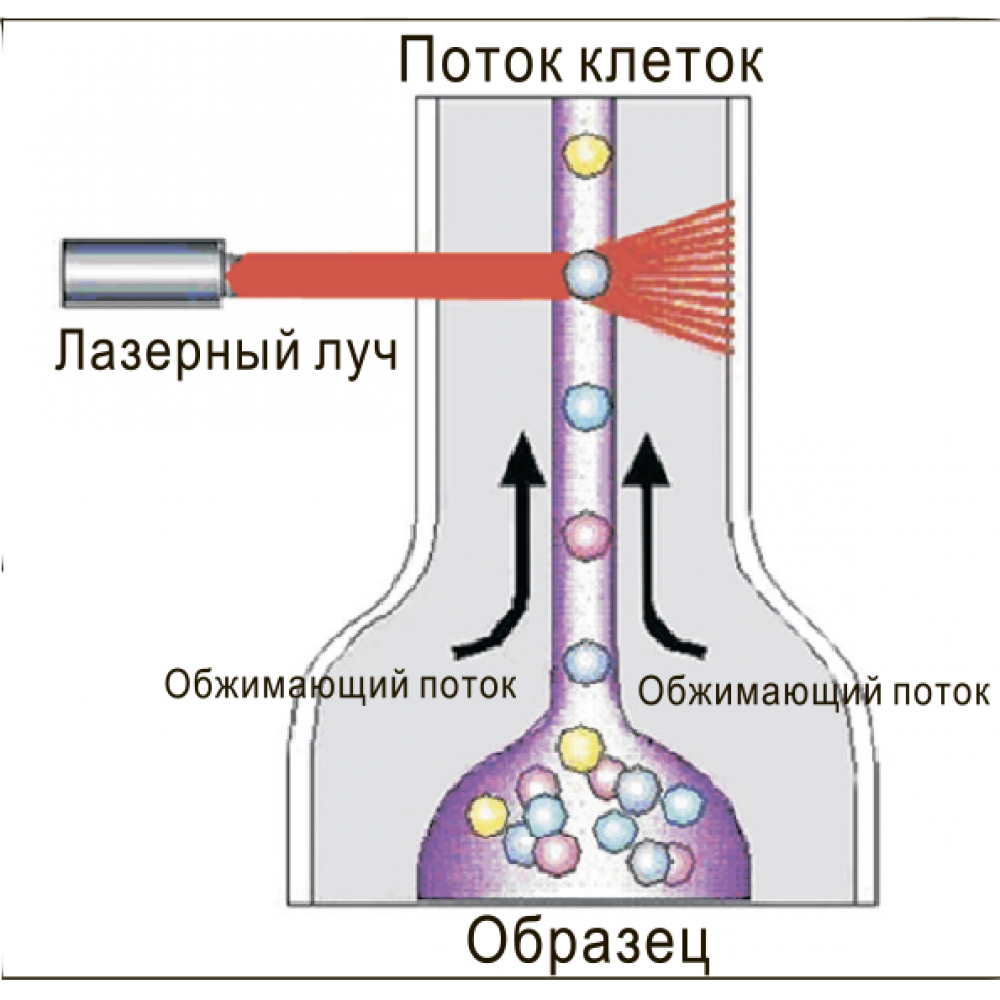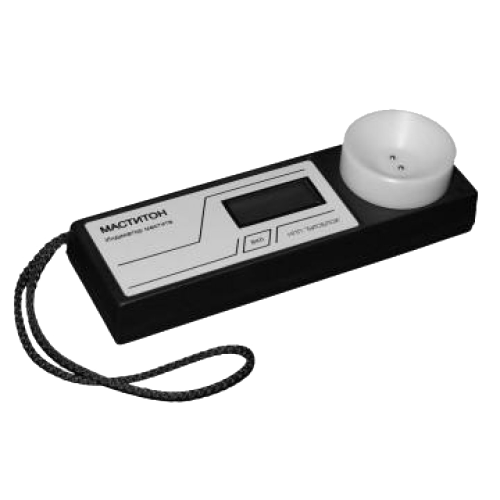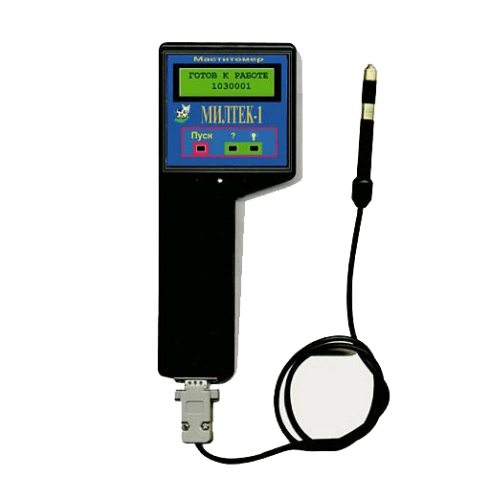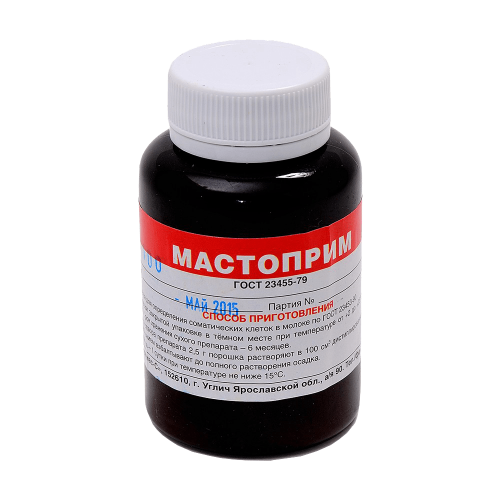Description
Quantitative cytometry is a relatively new technique for the microbiological study of dispersion media, carried out using special equipment.
What is flow cytometry?
Flow cytometry is a technique for studying disperse substances in the mode of piecemeal analysis of particles. The flow cytometry technique was created on the basis of special experiments to determine the size of the studied particles and count their number.
Principle of the flow cytometry method The
principles underlying the flow cytometry procedure are extremely simple:
- The suspension prepared from the cells is placed in a dispersion medium flow passed through a flow cell.
- Hydrodynamic focusing of a jet of a cell suspension in a jet of a dispersion medium leads to the fact that the studied cells or their nuclei line up one by one and in this order cross the beam of focused laser beams.
- The resulting light is focused using an optical system, and then decomposed into certain components.
- The resulting light signals are analyzed and converted into electrical impulses, and then into certain forms acceptable for computer processing and storage of the information received.
Advantages
- High (up to one hundred thousand episodes per second) analysis speed
- Ability to identify cell subpopulations
- The ability to analyze a huge (up to 108 elements in one ml of dispersion medium) number of cells
- The ability to determine the parameters of any cells and cellular structures (including rare ones)
- High degree of objectivity in measuring the intensity of the glow
We bring to your attention a unique cytometer “BioUniScan”
The main advantage of the technology is a significant increase in the volume of measured information from a single cell due to the use of an original optical system and modern electronic components. The amount of information taken from each cell makes it possible to solve the most complex problems in the field of light scattering and biokinetics, determining the detailed static and dynamic characteristics of cells. The efficiency of the technology has been proven by numerous reviews of publications in the world’s leading publishing houses and expert examinations of competitions of international and Russian scientific foundations.
Distinctive features
- Does not require the use of expensive chemical reagents (thanks to the innovative optical system and the unique mathematical method of information processing, cell staining is not required)
- Versatility: The technology is designed for maximum characterization of dispersed media, that is, the determination of the types and characteristics of particles that form the dispersed phase (characterization of milk fat particles by their size, shape and density, characterization of somatic cells)
- Suitable for scientific research of milk (the software has a huge number of functions for the subject study of milk, obtaining a layout of milk by particle size and quantity, graphical visual presentation of information)
- Highest measurement accuracy due to direct single cell counting
The analyzer is designed to equip clinical laboratories of stationary polyclinics, diagnostic centers, as well as medical research laboratories.
In view of the uniqueness of the new methods of analysis, there are no analogues on the diagnostic equipment market.
Warranty: 12 months
Training and commissioning from experts of the highest level
Information support of the Institute of Chemical Kinetics and Combustion SB RAS, Laboratory of Cytometry and Biokinetics





